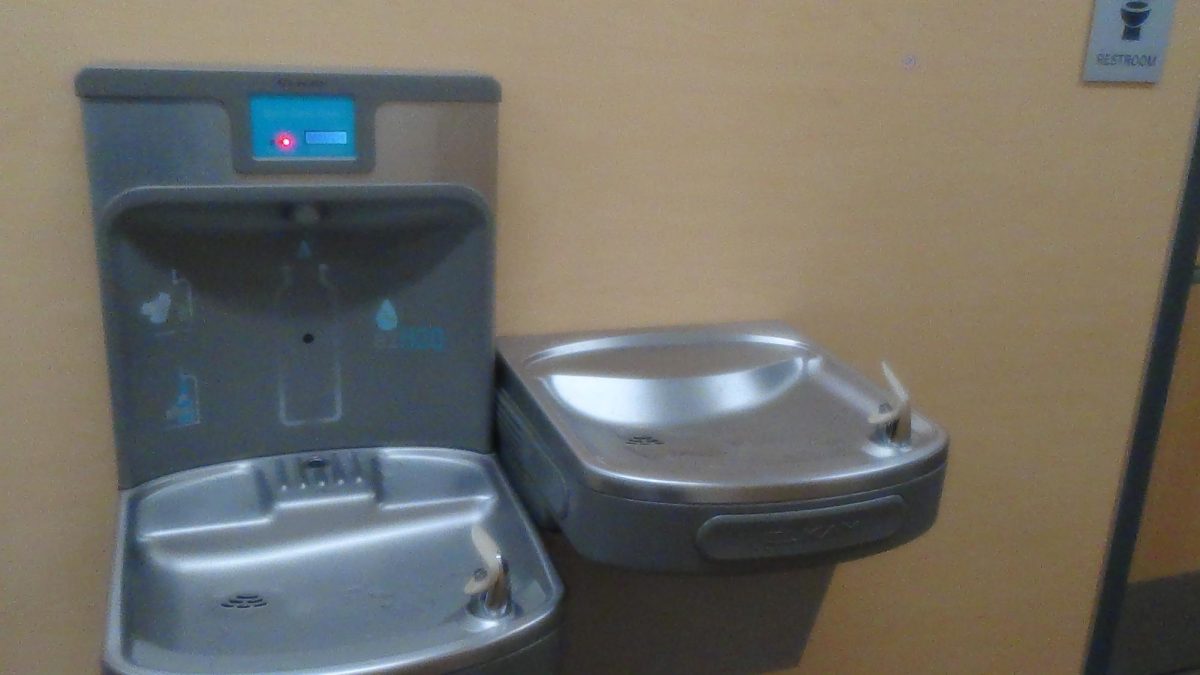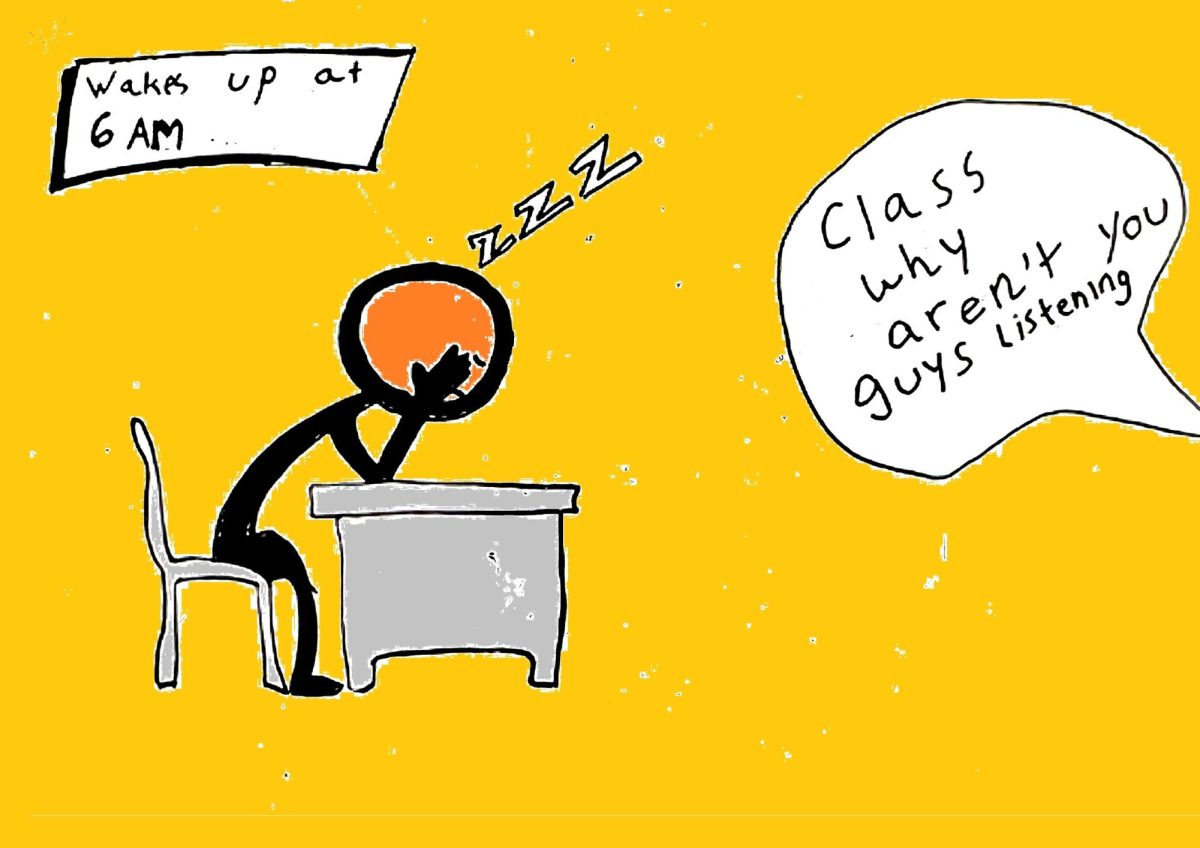Imagine you are sitting in class, your throat is scratchy, and you need water. So you ask your teacher, and they let you go. You’re happy that the uncomfortable feeling in your throat will be eliminated. You finally find a water fountain, but when you lean down to take a sip, you see it. Dirt and grime surround the place where you are supposed to drink out of. How would you feel? Would you be grossed out and try to tell a teacher? What if you decided to go get a water bottle from the vending machines, and when you went down there, the floors were littered with trash, and part of the floor was peeling up, not to mention the vending machines are cash only? After seeing this, you decide to walk back to class, your throat still scratchy and hurting. You are looking up at the ceiling, confused and sad, when you see something else. The ceiling in a classroom is brown and clearly has water damage. Now, are you concerned?
We went around the school to see if the water faucets were clean, checked for visible trash, and asked, overall, how well-kept is GHS? We found multiple areas around the school that needed help. Unfortunately, neither the school nor the water fountains are up to standard. The water fountains have a filter that needs to be changed every “3-6 months¨ as well as three colors of light to indicate the “clean status” of the water in the fountain. Green, orange and red. Green is the cleanest and red means the water filter needs to be changed, there is even a screen that comes by and says “maintenance”. I personally have seen all of these water filters in red since the beginning of the school year.
The slogan on all the water fountains is “Quick. Clean. Green,” which is only partly true. The water coming from the water fountain is quick, easy, and saves plastic; however, that doesn’t mean that the water is necessarily clean. Clearly, the red dot on the water fountain filter indicates that it needs to be changed; the water is clearly not as thoroughly filtered as preferred. Though a red light does not mean the water is unsafe to drink, it means the water filter is producing tap water. What’s the point of water fountains if there is no difference? Then the tap water that we wash our hands with… Who wants to drink out of a water fountain that physically says it needs “maintenance”?
On the bottom floor, we came across two water fountains; one of the fountains looked decent, although the status was still red. A second water fountain found in the cafeteria was Though this water fountain had a green light indicating that the water was safe to drink it is fully disgusting, showed obvious signs of being generally unkempt and discarded for, around the drain and the actual water dispenser there were noticeable water marks but ignoring those there is what looks to be pink mold and rust on the faucet/ the dispenser.. According to Poison.org: ¨small amounts of rust are not immediately harmful; however, can be harmful over time. Consuming large quantities of rust, which is iron oxide, can lead to iron poisoning. Symptoms include nausea, vomiting, stomach pain, and in severe cases, damage to organs like the liver.”
Another risk is bacterial contamination: “Rusty surfaces can harbor bacteria, and if this bacteria contaminates water, it could cause gastrointestinal problems.”
Ironically, this fountain was the only one with a green filter.
Gresham High School students are discouraged by this gross water. Freshman Addie Green said, “When I’m thirsty during cheer practice and need water, I go to drink from the water fountain, but it grosses me out to see the nasty fountains and water.” The students at Gresham would rather go thirsty than drink water from the fountains because of the water quality and cleanliness of the fountains. Gresham High School should come up with a plan to keep our water properly clean and our fountains looking good.






